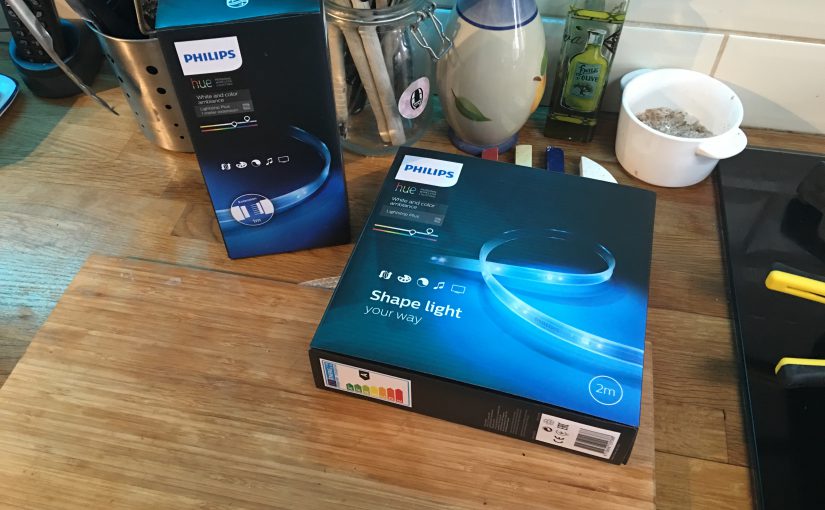The estimated reading time for this post is 4 minutes
With most of the house HUE’d up, I thought I would add Hue lighting under the cupboards in our kitchen. I love cooking but am often frustrated because of the poor lighting on the work surface in the kitchen. The trouble is the Philips Hue LED kit is only available in two sizes, the 2m main kit and in 1m extensions. Our kitchen cupboards are split in two by our cooker hob extractor. This leaves me with cupboard lengths of 1.4m and 1.6m. I did some research but could not find an extension lead for the Philips Hue light strips so rather than shedding out on two kits, I decided to hack together a solution to create my own extension lead.
Appreciating the risks and the potential cost of replacement involved if I failed, I took off and carefully hacked my own extension lead together. Below is a list of what you’ll need to do this yourself and the steps involved to make your own extension lead for your Hue light strips.
What you’ll need to hack your own Hue light strip extension lead together
- Philips Hue Personal Wireless Lighting 2 m Lightstrip Plus
- Philips Hue Personal Wireless Lighting 1 m Lightstrip Plus Extension
- Wire cutters and a good wire stripper
- Heat shrink to protect any exposed cables once we finish
- Soldering iron and solder to join the extension lead wires onto the Philips Hue light strip
- The desired length of cable (this will be your extension) – I couldn’t find a wire with six cores so used two five metre lengths of four core wire. Far less attractive but good enough for the hack this time around
- Optional connector terminals and a crimp tool (male/female spade terminals) – these allowed me to pass the extension lead through backs of my cupboards more easily
- Optional staple gun to tack the leads to the cupboards.

The steps involved…
- Plan and test the placement of your light strip and where you will attach the extension lead.
- Work out the route of your extension lead – in my case I went through the backs of the cupboards and then up and over the top of my extraction fan. This required a few holes to be drilled into the cupboards.
- Prepare your extension lead. Strip and tin each of the wire with the soldering iron.
- Decide if you will include a connector to allow you to separate the extension lead from the light strip. If you are going to add one, cut, strip and crimp the wires with your connector – in my case I used a set of spade terminals.
- Grandad always said measure twice cut once – so run through your placement and cabling route once more.
- And don’t be silly – remember to power off the light strip before the next step!
- Cut the light strip at the nearest cut joint because this is where we will solder our extension lead wires onto.
- Carefully cut back some of the outer plastic on the light strip so that you can solder your wires onto the terminals. Make sure you don’t forget to include some heat shrink to protect these joints once you have terminated the wires.
- Test the lights work correctly before fitting in your desired place.
- Tip! If placing under cupboards, place the light strip at the back for the best effect.
- Optionally use a cable staple gun to tack the extension lead throughout its route to make it extra secure.
Grandad always said, measure twice cut once.
Product improvement idea
Philips could avoid this problem altogether and avoid any hacking at all. Firstly they should offer an official 6 core extension lead. Secondly, they could alter the cut joint they include at various points throughout the light strip. Making each cut joint made up of a male and female connector under the plastic. To extend the lightstrip you would then simply cut over the joint and use the official Philips Hue light strip extension lead. The extension lead would have a male and female connector at each end, allowing you to simply connect it to the section you have just cut.

That aside, kudos to the Philips team for creating amazing lights and for placing cut joints throughout the light strip. This made my hack so much easier to pull off.

I’m really impressed with the outcome of the Philips Hue LED light strips and my custom extension lead hack. I hope you find this article helpful and it inspires others to extend Hue light strips more easily. This post is part of my home automation series. If you liked this hack, be sure to check out some of my other home automation hacks.


Leave a Reply
You must be logged in to post a comment.